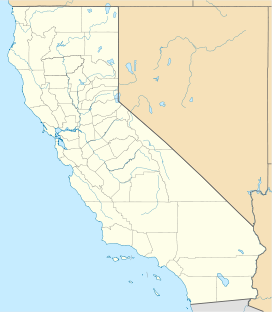| Converse Basin Grove | |
|---|---|
 A steam donkey crew at the Boole Tree, 1894. | |
| Map | |
| Geography | |
| Location | Fresno County, California, United States |
| Coordinates | 36°48′00″N 118°58′00″W / 36.8°N 118.966667°W |
| Elevation | 5,900–6,600 ft (1,800–2,000 m) |
| Area | 4,666 acres (18.88 km2) |
| Ecology | |
| Dominant tree species | Sequoiadendron giganteum |
Converse Basin Grove is a grove of giant sequoia (Sequoiadendron giganteum) trees in the Giant Sequoia National Monument in the Sierra Nevada, in Fresno County, California,[1] 5 miles (8 km) north of General Grant Grove, just outside Kings Canyon National Park.[1] Once home to the largest population of giant sequoias in the world, covering 4,600 acres (19 km2) acres,[2]: 138 the grove was extensively logged by the Sanger Lumber Company at the turn of the 20th century. The clearcutting of 8,000 giant sequoias, many of which were over 2,000 years old, resulted in the destruction of the old-growth forest ecosystem.[3]
The Converse Basin Grove has not recovered despite attempts at restoration in the 20th century. The planting of single-species conifer plantations and the practice of fire exclusion has resulted in two high intensity wildfires since the end of the logging era, further degrading the giant sequoia habitat.[4] Despite these challenges, the grove offers opportunities for studying forest resilience and restoration efforts.[2]: 36, 45
Converse Basin Grove is home to several notable giant sequoia trees, including the Boole Tree, the sixth largest of its kind in the world, and the Chicago Stump, the remains of the General Noble Tree which was cut down for the 1893 World's Columbian Exposition. Another notable tree in the grove is the Muir Snag, which is believed to have been 3,500 years old at the time of its death, making it one of the oldest known giant sequoias.[5]
- ^ a b "Converse Basin Grove". US Forest Service - Sequoia National Forest. Archived from the original on 2020-07-28. Retrieved 9 December 2019.
- ^ a b "Giant Sequoia National Monument Management Plan" (PDF). USDA.gov. United States Department of Agriculture. August 2012. Retrieved January 4, 2023.
- ^ Cite error: The named reference
Zimmermanwas invoked but never defined (see the help page). - ^ Cite error: The named reference
USFS Rough Firewas invoked but never defined (see the help page). - ^ Cite error: The named reference
USFS Converse Basinwas invoked but never defined (see the help page).
